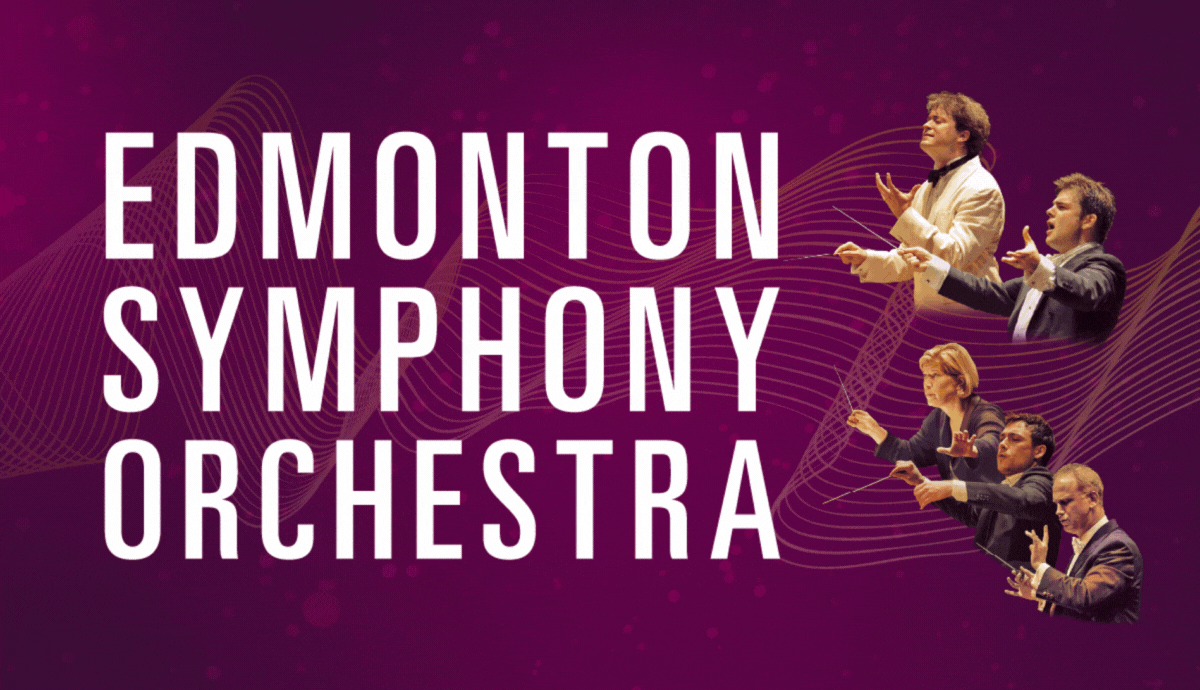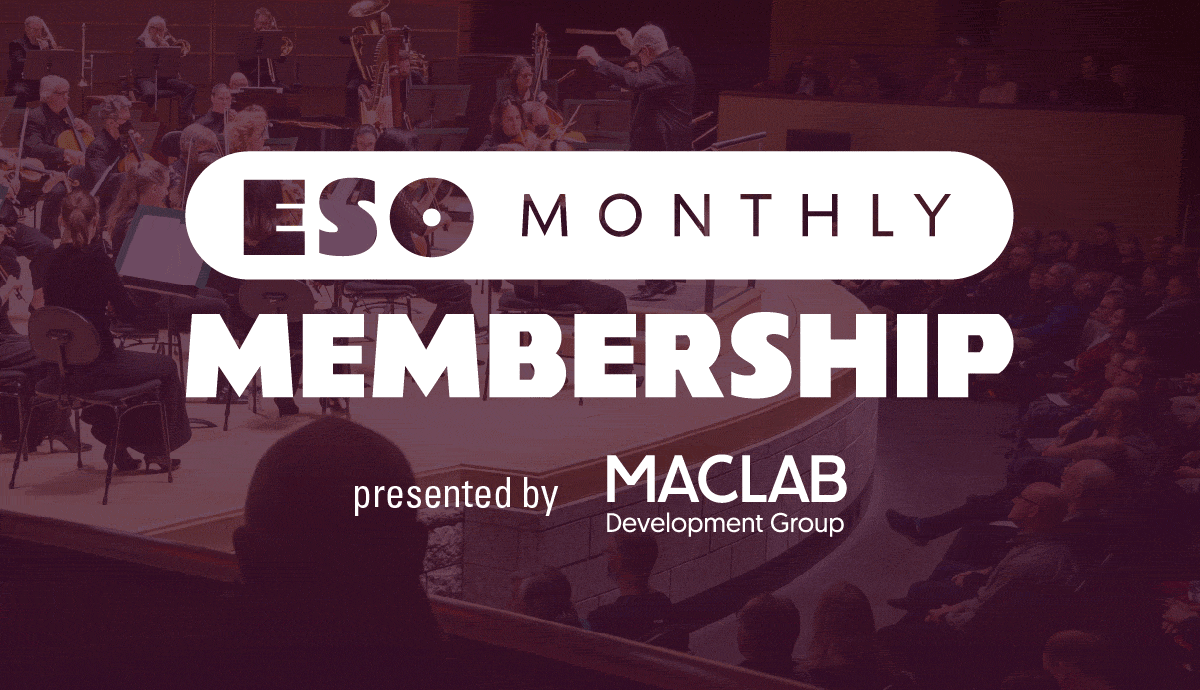History
The Early Years
On November 15, 1920, an orchestra of 52 musicians under the direction of Weaver Winter presented a concert in the Pantages Theatre, Edmonton. From then until 1932, concerts were staged on a more or less regular basis, principally in the New Empire Theatre, with conductors such as Henri Baron and the legendary Vernon Barford. A lack of funds brought the fledgling orchestra to a halt in 1932.
In 1941, however, the Edmonton Philharmonic was formed, with conductor Abe Fratkin. Edmonton's "Pops Orchestra" was formed in 1947 by the City of Edmonton Recreation Department. Lee Hepner was made conductor of this new ensemble.
The Edmonton Symphony Orchestra Comes of Age
On October 31, 1952, documents were signed, filed and registered, establishing the Edmonton Symphony Society. Its first president was Mrs. F.W. Mills, and Lee Hepner (right) was made the now-professional Edmonton Symphony Orchestra's first conductor. The 1300-seat Capitol Theatre was its performance home.
One year later, the Edmonton Symphony's Women's Committee was founded, with Mrs. Donovan Ferris its first president. They would later be known as the ESO Associates, a fundraising group made up of volunteers who engaged in a variety of projects designed to raise money to help support the ESO.
In 1955, under the aegis of the Women's Committee, the Edmonton Symphony presented its first in-school concert. This modest beginning has paved the way for what is now one of Canada's most successful and comprehensive educational concert series.
The Edmonton Symphony played its first "run-out" concert in the nearby town of Fort Saskatchewan. A year later, the orchestra moved into its new performance home, the Northern Alberta Jubilee Auditorium.
Lee Hepner resigned as the ESO's conductor in 1960. His brother-in-law Thomas Rolston – an outstanding violinist and the ESO's concertmaster, took over as Associate Conductor until 1964, when Brian Priestman was hired as Conductor and Music Director. Maestro Priestman led the ESO until 1968, when Lawrence Leonard took over. Under his guidance, the ESO took some of the most daring steps it had ever taken.
On November 18, 1971, the ESO teamed up with British rock group Procol Harum in what was, at the time, a landmark collaboration between an orchestra and a rock band. The resulting album, released in 1972, became the first ever album with an orchestra to sell "gold," and in 1982, the first ever album with an orchestra to sell "platinum." The two groups united for a nostalgia-filled reunion concert in 1992. Also with the start of the 1971-72 season, the Edmonton Symphony took the challenging step of moving from a part-time, nighttime-rehearsed orchestra to a full-time, daytime-rehearsed unit.
Pierre Hétu began his tenure as ESO Conductor and Music Director in 1973. Two years later, a series of television programs produced by ITV (now Global) and North West Video brought the ESO to an international audience, featuring the orchestra backing up musicians such as Tom Jones, Englebert Humperdink, Jack Jones, Vicki Carr, Leslie Uggams, Paul Williams, Roberta Flack, Charles Aznavour, Henry Mancini, Neil Sedaka and Anne Murray. Also in 1975, the orchestra went on its first major western Canadian tour.
In 1981, the Edmonton Symphony introduced Uri Mayer as its new Principal Conductor and Music Director. In 1985, David Hoyt was named the orchestra's Resident Guest Conductor. That same year, an ESO CBC recording, Orchestral Suites of the British Isles, was awarded the Canadian Music Council's Grand prix du disque. More plaudits for recordings with the ESO would follow: a 1987 recording of Edmonton composer Malcolm Forsyth's atayoskewin earned the composer a Juno award for best classical composition. Ten years later, Dr. Forsyth would win it again, with a recording of Electra Rising, a cello concerto he wrote for his daughter Amanda Forsyth, which was recorded by the ESO under Grzegorz Nowak.
The ESO continued to mine the rich vein of its talent for collaborations with artists outside the mainstream orchestral performance sphere. Performances with Tom Cochrane and Red Rider in 1989 resulted in an album called The Symphony Sessions, which went platinum, while a 1992 performance with k.d. lang and conducted by Tommy Banks received a Gemini award for best television variety performance.
In 1992, the Edmonton Symphony engaged its first-ever Composer in Residence. John Estacio, an award-winning young Canadian composer, would write many new important works during his tenure. The ESO embarked on an ambitious tour of Canada's north in 1994. The Northern Lights tour took them to Whitehorse, Yellowknife and Inuvik, with Edmonton native Juliette Kang as soloist. The tour included pops and educational programs as well as classical performances. Compositions by Estacio, Allan Gilliland, and Robert Rival, who are our three past Composers-in-Residence, were all featured on the 2012 performance by the ESO at Carnegie Hall.
Following a three-year search, Grzegorz Nowak was appointed Music Director and Principal Conductor of the ESO in 1995. Another distinction occurred in 1996, when the orchestra became the first in Canada to perform at a First Nations reserve. In 1997, the orchestra moved into its new performance home, the Francis Winspear Centre for Music.
In 1999, Edmonton composer Allan Gilliland succeeded John Estacio as the ESO's new Composer in Residence.
In January, 2005, the Edmonton Symphony named American conductor and pianist William Eddins its new Music Director, after a two-year search. His tenure was highlighted by progressive and innovative programming, the addition of dozens of works to the orchestra’s repertoire, and a number of outstanding artistic achievements. Perhaps none is more prestigious than the 2012 debut for the Edmonton Symphony Orchestra at New York’s storied Carnegie Hall – a concert hailed by press and public alike, and attended by nearly a thousand banner-waving Edmontonians.
The ESO forged several important artistic relationships during Bill Eddins’ tenure. In 2009, Lucas Waldin joined the ESO as Resident Conductor, and has stayed on in his capacity as Enbridge Artist in Residence and Community Ambassador. From 2011 to 2014, the ESO welcomed its third Composer in Residence, Robert Rival. Guest conductor Robert Bernhardt has conducted the ESO’s yearly outdoor orchestral festival for twelve consecutive seasons, while iconic pops conductors Jack Everly and Steven Reineke have been regular visitors.
The 2013/14 season marked the beginning of YONA-Sistema, the Edmonton Symphony Orchestra’s Sistema-inspired program using music as a means of social change for under-served children in the community. It was also the first for the orchestra’s new Concertmaster, Robert Uchida. After 12 seasons as Music Director, William Eddins was named Music Director Emeritus, and in early 2017, Alexander Prior was named the ESO's Chief Conductor, beginning with the 2017/18 season. This dynamic young conductor has already imprinted his enthusiasm and spirit, and heralds a fresh new direction for the orchestra.








